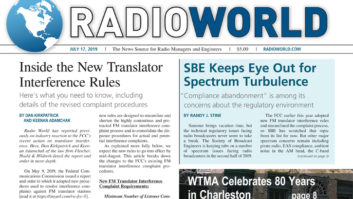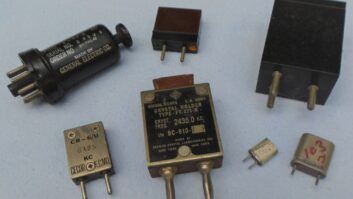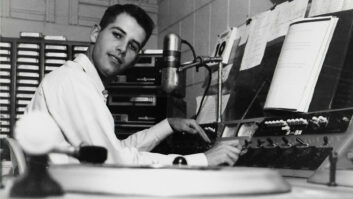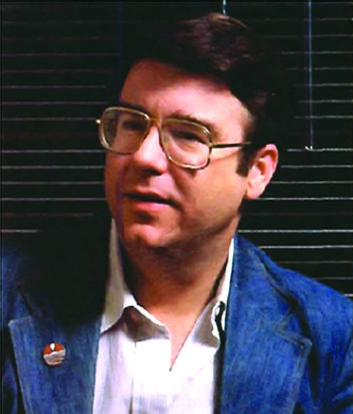
“Von Meister is a terrific entrepreneur, but doesn’t know when to stop entrepreneuring.” — Jack Taub, financial backer of Infocast
Bill von Meister grew up planning to be his own boss. He had a fine example in his wealthy father, who managed a company called German Zeppelin Shipping in Lakehurst, N.J.
After completing his (non-technical) education at Georgetown University in 1973, von Meister started a wholesale liquor company. He found this boring and decided that he should become a consultant.
Working family connections, von Meister was hired to create a database for Litton Bionetics. He knew only the basics of computers but completed a successful database. Once it was up and running, he lost interest and went looking for another consulting gig.
Word got out and Western Union contacted him; they needed someone to create a computerized billing system. Von Meister went to work on the system in 1974 and expanded his knowledge of computer applications with the help of Western Union engineers.
He was fortunate to have an intuitive sense for how various systems and equipment might be combined to serve brand-new purposes. An example of this can be found in his next job change.
TELEX AND TELEPOST
Western Union gave him an assignment that involved Telex. In it, he saw a way to speed up delivery of hardcopy business mail. A letter was transmitted to the city nearest its destination by Telex. A local teleprinter created a hardcopy, which was sent to its final destination via USPS Next Day Delivery. Customers could call in and dictate letters.
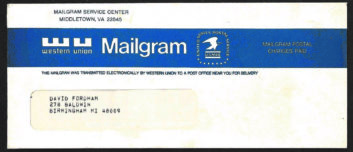 He offered the idea to Western Union. The company wasn’t interested, so von Meister found another backer for his idea, a company named Xonics. The service, called Telepost, was so successful that Western Union bought Xonics and rebadged it as Mailgram.
He offered the idea to Western Union. The company wasn’t interested, so von Meister found another backer for his idea, a company named Xonics. The service, called Telepost, was so successful that Western Union bought Xonics and rebadged it as Mailgram.
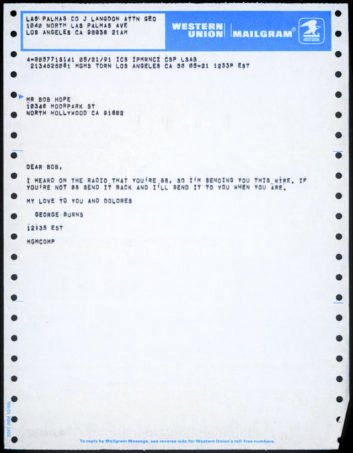
HOOKED ON STARTUPS
Von Meister wasn’t giving Telepost much attention by this time. It was characteristic of Bill von Meister that he could never be happy running a successful business. He was hooked on startups. A pattern emerged as he started a search for a backer for his next big idea.
The idea was a “least cost” long-distance service that he developed with an engineer from Western Union. The service cost less (thanks to a routing algorithm the two developed) and had more useful features than anything MCI or AT&T offered. Von Meister called the service Telemax and marketed it under the corporate umbrella of TDX.
Telemax soon reached a point where it required additional capital. Von Meister found a backer in a British company, Cable & Wireless, which was looking for an entry into the lucrative North American business telephone market.
The deal closed with von Meister drawing $70,000 per year to run TDX/Telemax. Within months, von Meister was eyeing two new businesses while neglecting TDX.
One combined Telemax with FAX and Express Mail to expedite collection letters. Letters were FAXed to the USPS Express Mail center in Chicago. From there, the FAX printouts were Express Mailed to recipients.
INVENTING INFOCAST
The other idea was probably the most revolutionary concept Bill von Meister ever had.
Von Meister and two engineers devised an information network based on “piggybacking” digital data on FM radio broadcasts using a single sideband.
The system, which von Meister named Infocast, could broadcast data up to the limit of an FM broadcast (about 75 miles). Dedicated receivers would decode Infocast data for display on terminals. As he told Businessweek, a network of 50 FM stations across the country, with data routed between stations by packet-switching networks over telephone lines, could reach more than 90% of businesses.
Von Meister’s plan was that Infocast clients would have private two-way data channels through which they could transmit anything, anytime. Infocast would lease equipment to clients, and charge for data traffic.
Von Meister formed a company called Digital Broadcast Corp. to produce and market Infocast — with Cable & Wireless money. (He would soon be forced out of TDX/Telemax over that.)
He lined up equipment sources, set up offices and a technical staff in McLean, Va., and put sales force to work marketing Infocast to corporations and institutions. In November 1977, WGMS(FM) of Washington, D.C., began on-air tests with Infocast hardware. Before long, FM stations across the country were broadcasting data for Infocast.
A California-based grocery chain called Lucky Stores signed up to send data to its stores on the East Coast. And there were other customers.
BIGGER PLANS
Infocast was a viable entity but more than a little tight for cash. Late in the year, von Meister found a backer for Infocast, an entrepreneur named Jack Taub.
Of course, von Meister’s master plan was for a consumer network — a system that would transmit news, weather, stock market prices, sports and other information from a central location, to be relayed to FM stations for broadcast.
Home users would tap into data broadcast with receivers and terminals rented from Infocast. Von Meister also planned to allow those same users to send data, and even exchange messages.
Essentially, it was a wireless public internet, 20 years ahead of its time.
But there was no way to fund an Infocast consumer network. Supplying 1,500 terminals to a corporate customer at a cost of a few million dollars was practical. Providing terminals to millions of consumers was not. Thus his dream faded.
[What’s Your Simulcasting Strategy?]
But Bill von Meister had another idea, which was inspired by reports of personal computers flooding homes across America. He called his idea CompuCom. Later, the name would be changed to “The Source.” But that is another, fascinating, story.
This story is based on trade magazines and newspapers of the period, with supplemental information from Bob Ryan, president of The Source at its founding, and Jack Taub, a primary investor who took over the company and fired von Meister in 1980.
Michael A. Banks is the author of “On the Way to the Web” (APress, 2008), “Crosley and Crosley Motors” (Enthusiast Books, 2012), “Ruth Lyons, the Woman Who Created Talk TV” (Orange Frazer Press, 2009) and other titles.





